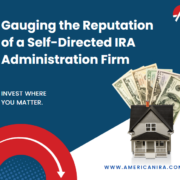Don’t Ignore This Lesser-Known Advantage to Business Taxes
Many retirement investors choose to file their taxes using a Schedule C for their business income—such as through a Sole Proprietorship, a Single Member LLC, or potentially a Corporation. A Schedule C is a form used to report income or losses from a business operated as a sole proprietorship. Filing a Schedule C has several advantages, including the ability to deduct business expenses and the flexibility to report income on a monthly or yearly basis.
However, there is one other key advantage that might work to the benefit of anyone who needs more flexibility for retirement investing, whether that includes a Self-Directed IRA or not. Let’s take a closer look at some of the advantages of filing a Schedule C.
A Lesser-Known Advantage to Business Taxes
Did you know that both employer and employer contributions might possibly be made up until a company’s tax return deadline? That might sound like a nice advantage, but consider this: there is a possibility this can include tax extensions. Let’s break down what this means.
First, let’s assume that you have a sole proprietorship, or a Single Member LLC with a schedule C income—or a C-Corporation. In 2022, the company’s tax return deadline would have been April 18th . Keep in mind you would be paying taxes for the 2021 year on April 18th, 2022. With an S-Corporation or partnership LLC, the deadline would have been the middle of March of 2022. However, both deadlines have the option of extending 2021 contributions by another half a year, or six months, if you were to file for a tax extension.
Why might this benefit you? Let’s say you wanted to make more contributions in that year but you didn’t have the money to do so until later in the year. The option of filing an extension would then provide you with more flexibility, giving you the change to make contributions when you did have the money ready to go.
Why Use a Self-Directed IRA?
If you have a Self-Directed IRA, you may also be able to use retirement investment vehicles like SEP IRAs when you have a company of your own. This means that the option explained above is just one potential advantage. Let’s look at the other advantages.
Wider Range of Assets
One of the biggest advantages of a Self-Directed IRA is the ability to invest in a wider range of assets. Traditional approaches to IRAs and most employer-sponsored retirement plans only allow you to invest in stocks, bonds, and mutual funds. But with a Self-Directed IRA, you can also invest in alternative assets like real estate, private loans, precious metals, and more. This gives you greater flexibility and potential for finding the growth you want in your retirement account.
More Control Over Investment Decisions
Another advantage of a Self-Directed IRA is that you have more control over your investment decisions. With a traditional approach to an IRA or employer-sponsored retirement plan, you typically have limited investment options and someone else makes the majority of the investment decisions for you, including limiting what you can do with the IRA. With a Self-Directed IRA, you’re in charge of your own investment choices. This means you can choose investments that are in line with your personal goals and risk tolerance.
A Self-Directed IRA can be a great way to invest for retirement. They offer many advantages, including the ability to invest in a wider range of assets, more control over your investment decisions, and potential tax benefits. Interested in knowing more? If you’re looking for more flexibility and control over your retirement investments, a Self-Directed IRA may be right for you. Give us a call at 866-7500-IRA to find out more from American IRA.
Want to learn more about Self-Directed IRA Business taxes? Visit: Self-Directed IRA Taxation: Understanding UBTI (Unrelated Business Taxable Income) (americanira.com)










